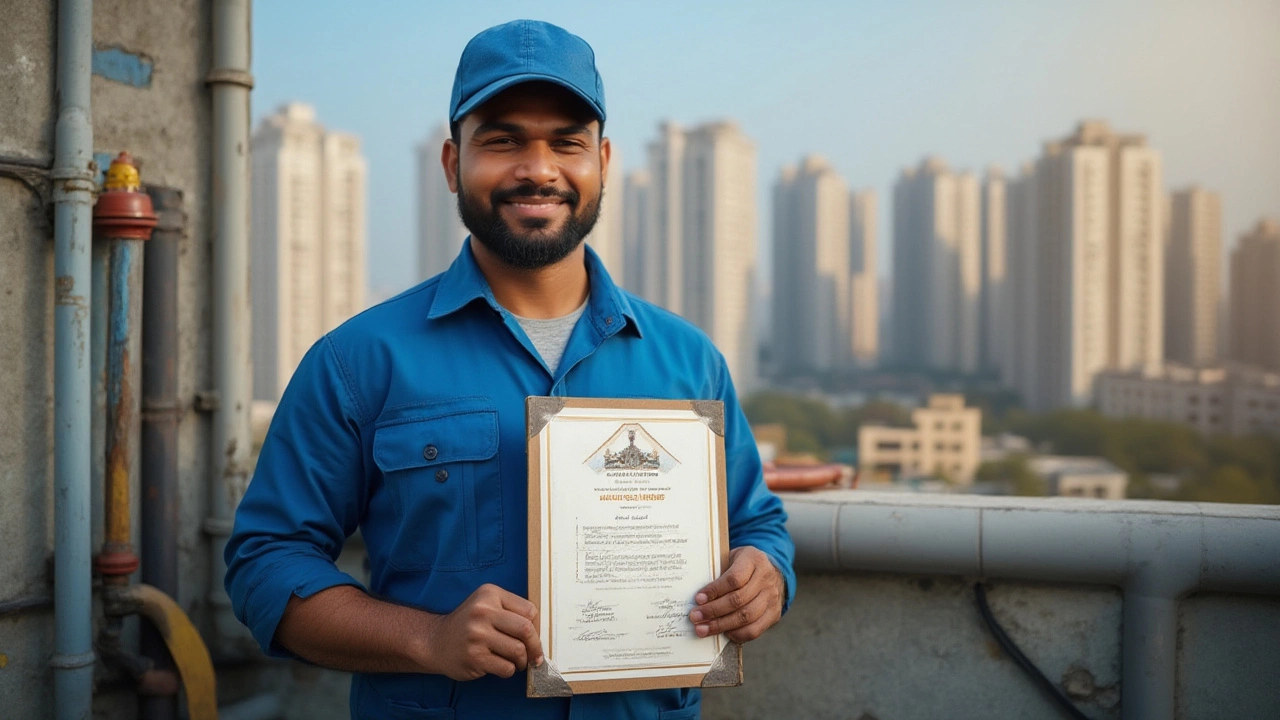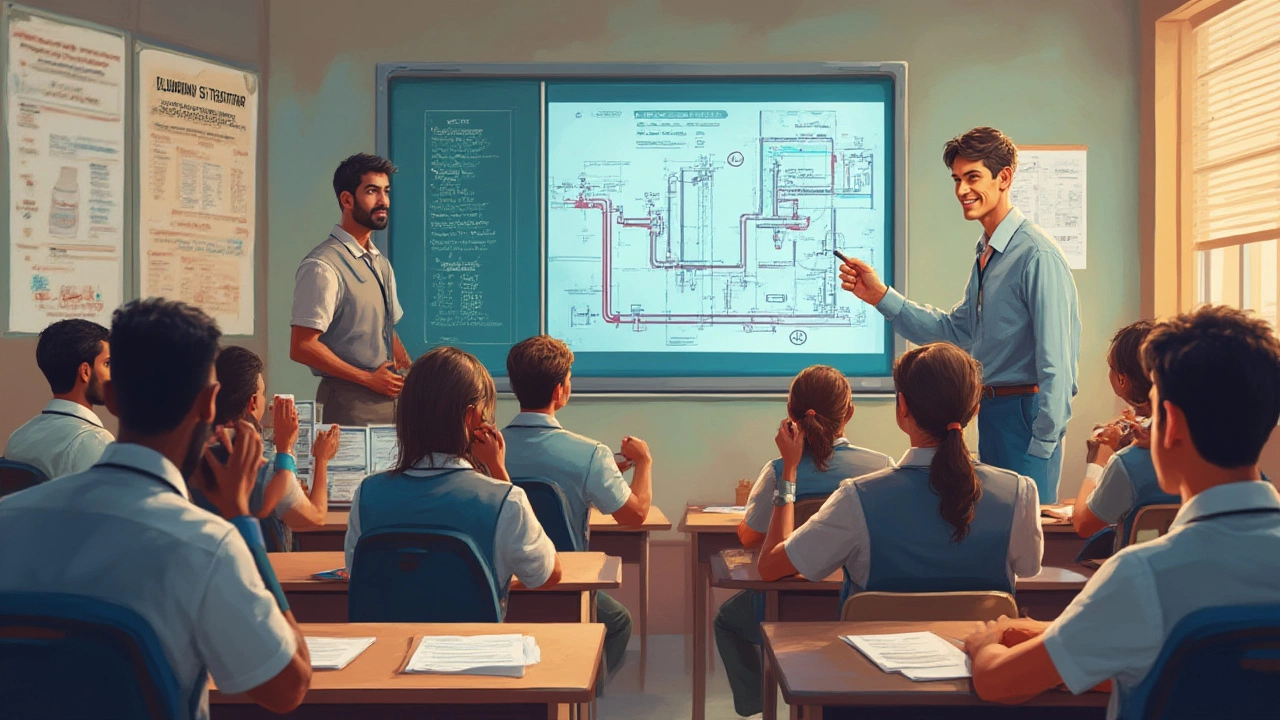Highest Plumbing Certification: Master Plumber License Explained

If you think all plumbers just fix leaky pipes, you’re in for a surprise. Behind the scenes, there’s an elite level in the trade that takes years, grit, and a ton of learning to reach. We’re talking about the master plumber license, which isn’t just a badge for show—it’s the real deal, carrying weight, responsibility, and, often, a bigger paycheck. Not everyone who wields a wrench and pipe cutter gets here. The path to this top-tier plumbing status is demanding, technical, and packed with lessons that only the most determined finish. So, what does it really take to climb to the very peak of plumbing?
What Is the Highest Plumbing Certification?
Across the United States, the highest plumbing certification is known as the Master Plumber license. Getting here isn’t a quick weekend course. In most places, you start as an apprentice, start learning the ropes under the watchful eye of someone who’s been in the trenches for a decade or more. Want to move up from apprentice? You’ll need to work thousands of hours and pass challenging exams—just to make it to journeyman plumber. That alone already opens doors to bigger jobs and more money. But for the true top spot, you have one more level: Master Plumber.
Holding a Master Plumber license means you’ve reached the highest rung in the plumbing world. Here’s what’s fascinating: every state (and even cities) has its unique requirements, tests, and paperwork, but the core idea always stays the same. You’re not just a plumber—you’re the person who can supervise huge commercial projects, train other plumbers, design plumbing systems from scratch, and sign off on legal documents. In fact, most cities only allow master plumbers to pull permits or start a plumbing company. Want to work on a hospital renovation, design public water systems, or oversee skyscraper plumbing? You need a master plumber’s signature.
Here’s a quick look at how job levels rank in the typical plumbing career ladder:
| Rank | Title | Main Duties |
|---|---|---|
| 1 | Apprentice Plumber | Learning under supervision, basic repairs |
| 2 | Journeyman Plumber | Independent work, some complex projects |
| 3 | Master Plumber | Supervision, permits, business ownership, system design |
Don’t be fooled by the title “master”—it doesn’t just mean you’re good with tools. You’ll need math skills, deep technical knowledge, and the kind of judgment that only comes from years on the job. States like Texas, New York, and California require a blend of classroom training, on-the-job experience (usually eight years or more in total), and a passing grade on a notoriously hard exam. According to the Bureau of Labor Statistics, less than 10% of licensed plumbers ever make it to master status. That’s a club with high standards.
Journey to Master Plumber: Steps, Study, and Grit
The path isn’t for the faint-hearted. It’s more of a marathon than a sprint, filled with technical study and hard, dirty hours. To even apply for a master plumber test, most states expect you to have a set number of years as a licensed Journeyman—usually between two to five years minimum after finishing your apprenticeship. That means, for most, you’ve already racked up at least 6 to 10 years in the business before you even get to apply. The hours? Expect somewhere between 8,000 and 10,000 of on-the-job work plus around 500 hours of classroom or safety training, depending on your state. Some places, like Illinois, have their own twist: you have to show that you’ve worked on specific types of plumbing jobs—industrial, medical piping, big commercial builds—before you get the green light.
When you're ready for the big leap, you'll face an exam that makes most people sweat. We're talking about code books as thick as your arm, complex math problems, blueprint reading, and sometimes questions on business law. The test is timed—usually about four hours—and often includes both written questions and practical demonstrations. Here’s what’s usually on the test:
- Plumbing codes (national and state)
- Blueprint interpretation
- Advanced pipefitting
- Backflow prevention
- Safety regulations and OSHA standards
- Business laws and liability issues
Fail? That’s normal—many try more than once. Pass? That’s bragging rights and a golden ticket. According to the National Inspection Testing and Certification Corporation (NITC), pass rates for master plumber exams hover around 45%. So, less than half of all applicants pass on the first try. Training schools often run review boot camps for those who want an edge. People swap stories of exam horror, but those who make it wear it as a badge of honor.
Experience matters just as much as book learning. The licensing boards want to see you know how actual buildings work, not just answers from practice tests. “Nobody’s ever needed a perfect equation while crawling under a 100-year-old foundation,” says James Cooper, a veteran master plumber in Boston.
“The best master plumbers solve today’s crisis with yesterday’s wisdom and tomorrow’s plans.”It isn’t just about patching leaks—it’s about thinking ahead, seeing problems before they start, and protecting the people who depend on clean water and safe systems.

Benefits and Responsibilities of a Master Plumber
Reaching master plumber status isn’t just about the paycheck—though that doesn’t hurt. According to the U.S. Bureau of Labor Statistics, master plumbers often earn between $75,000 and $120,000 per year, and business owners with this license can pull in far more. The money is good, but what’s really at stake here is influence and responsibility. Here’s what sets master plumbers apart:
- Authority: Only master plumbers can sign off on big permits, supervise large-scale projects, or legally open a plumbing company in most states.
- Expertise: They can design entire systems for complex buildings—think hospitals, hotels, or schools—where a leak or code violation can have massive consequences.
- Supervision: Training and mentoring the next generation is up to the master, who takes responsibility for everything their team does.
- Legal Liability: Mess up a high-rise project? That’s on the master plumber’s license and insurance. The accountability is heavy, so attention to detail is non-negotiable.
- Pride: There’s genuine pride at this level. You’re fixing problems most people barely understand, often under pressure and tight deadlines.
But here’s the catch—being a master plumber means never dropping your guard. Codes change all the time. Everything from new water-saving devices to graywater recycling and modern fire suppression adds layers of complexity to every project. You’re expected to keep current, which means regular continuing education. If you don’t, you risk losing your hard-earned license. Most states mandate at least eight to sixteen hours of continuing education every year for master plumbers.
One thing to know: the master plumber’s test and rules sometimes move with technology. With smart home water systems and eco-friendly plumbing gaining ground, licensing boards continually update their exams and requirements. Plumbers who invest in learning about green technology see bigger job opportunities, especially as building codes get stricter and customers demand more sustainable solutions. There’s also the leadership side—teaching apprentices, managing crews, making business calls. As a master plumber, you might be under the crawl space one day, in city hall the next, and dealing with angry insurance reps after that. Flexibility is key.
Tips for Aspiring Master Plumbers and Next Steps
So you want to join the ranks of the master plumbers? Here’s the thing: nothing beats tempo and tenacity. Stay in the field, keep learning, and always work with the best—learning from folks who’ve “seen it all” will fast-track your skills. Get your hours in, and log every project. Many licensing boards want proof for every claim. Set aside time every week to study the code book, and ask your current supervisor or boss for advice. Don’t wait until you’re two months from the test to start preparing—the workload sneaks up on everyone.
Practice, practice, practice. Master plumber tasks won’t always show up in school. Push to get hands-on experience with everything from complex drainage to industrial water supply lines. If your current job is mostly residential, ask if you can shadow on bigger commercial projects. Apprenticeship programs through trade unions or respected plumbing schools are golden; stick with them even if it means lower pay in the short term. The skills you gain (and the references you collect) are priceless once you’re ready to step up.
Some specific tips for folks eyeing that summit:
- Find a mentor who’s already a master plumber. They’ve passed the test, know what matters, and will keep you honest about your progress.
- Treat every code violation you spot (or avoid) as a lesson. Ignore shortcuts—they come back to haunt you during the exam, and worse, on job sites.
- Ask around for good master plumber exam prep courses. Many local schools have solid programs, including weekend “boot camps.”
- Track changes to state and national code books every year. The rules are a moving target, and nothing knocks people off their exam more than missing a recent update or amendment.
- Prepare your body as well as your brain. It’s heavy, physical work, and you’ll need stamina for field inspections and manual tests.
One last thing worth mentioning: plumbing is always going to be a career for problem-solvers. The top certifications don’t just open up more doors; they protect the public, keep buildings running, and help neighborhoods grow. The best in the trade are the ones who aren’t afraid of hard work or change. No matter where you are now, if you want to get to the top—the journey’s right there, one pipe at a time.

Post-Comment